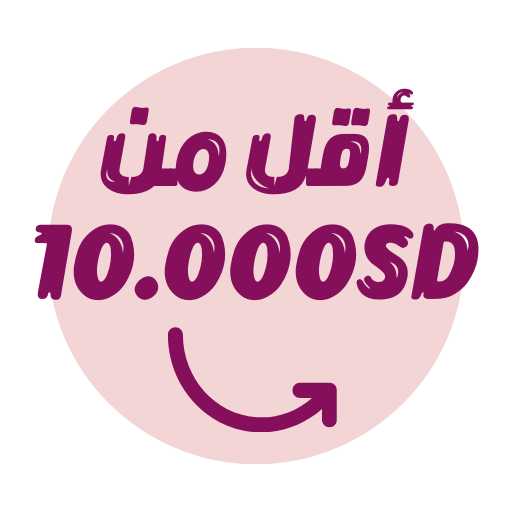Large Language Models Will Define Artificial Intelligence
You might ask it to generate a novel recipe for something that isn’t in its database — such as, perhaps, a gummy bear curry. But it’s also prone to outputting text that’s subjective, inaccurate, or nonsensical. This makes these huge, popular models unfit for industries where accuracy is important. The researchers also tried two sets of test cases on ESM-2 and Google’s AlphaFold2.
Claude is often better at understanding what you’re trying to get at, saving you time and effort, especially if you’re not a prompt engineering expert. Compared to other LLMs I tested, Claude offers an extremely large context window, making it an excellent choice when you’re summarizing and analyzing lengthy files. The LLM is also a clear, coherent, and nuanced writer, capable of generating human-like text in a conversational tone on a variety of topics. While the free basic version is appealing, what sets Gemini apart is “Gemini for Google Workspace,” an AI assistant that’s connected with Google Docs, Sheets, Gmail, and Slides. This integration enables a wide range of use cases for Workspace users, including building slideshows in record time and automatically surfacing business insights from Gmail. Falcon stands out as the highest-performing open-source LLMs I’ve tested, consistently scoring well in performance tests.
Where Financial Models Meet Large Language Models
To contribute back to the community, we wrote a paper with over 70 pages detailing how we built our dataset, the choices that went into the model architecture, how we trained the model, and an extensive evaluation of the resulting model. We also released detailed “training chronicles” that contains a narrative description of the model-training process. Our goal is to be as open as possible about how we built the model to support other research groups who may be seeking to build their own models. While recent advances in AI models have demonstrated exciting new applications for many domains, the complexity and unique terminology of the financial domain warrant a domain-specific model. It’s not unlike other specialized domains, like medicine, which contain vocabulary you don’t see in general-purpose text.
How AI is Shaping Financial Advice & Analysis
- The latest version, Granite 3.2, was released in February 2025, incorporating new reasoning and vision capabilities into the existing Granite 3.1 family.
- Bloomberg, the man, was a general partner at Salomon Brothers in the 1970s, heading up equity trading and eventually moved over to systems development, and so when it comes to technology, Bloomberg is no slouch.
- The first thing you need to know to understand this work is that, while the term “language” in the name “LLM” refers to their original development for language processing tasks, they can potentially be used for a variety of purposes.
- An AI-powered chatbot from a Value-Based Care (VBC) provider that sends tailored advice based on a user’s personal preferences.
- This process also allows us to show that we are in control, correcting errors and learning from them.
By valuing and responding to all stakeholders’ feedback, organizations can ensure greater accountability in the development and deployment of their LLMs. If you are a Global 20,000 company and you want to build a large language model that is specifically tuned to your business, the first thing you need is a corpus of your own textual data on which to train that LLM. And the second thing you need to do is probably read a new paper by the techies at Bloomberg, the financial services and media conglomerate co-founded by Michael Bloomberg, who was also famously mayor of New York City for three terms.
Siri, Google Translate, and the helpful chat bot on your bank’s website are all powered by this kind of AI — but not all NLP systems are created equal. To test their system, the researchers tried a range of LLM sizes, varying the number of parameters that describe the strength of the connections among their nodes from 8 million up to 15 billion. For proteins with a lot of close relatives in the training set, you didn’t need a very large LLM in order for the prediction quality to max out. For proteins that were rare or unusual in some way, performance started out low in the base LLM and improved as the size went through XL to XXL. The power of LLMs comes from their ability to leverage deep learning architectures to model intricate patterns in large datasets, enabling nuanced understanding and generation of language. To measure how accurate the outputs are, I looked at each model’s parameter size, training data quality, frequency of updates and external test results on factual accuracy and answer precision.
The project achieved preliminary results in the creation of a new foundation model for finances2, based on an evolution of the ‘Transformer’ architecture used by BERT, GPT and many other models. The AI receives in input sequences of bank transactions, and transforms the different numerical, textual and categorical data formats into a uniform representation. Then it learns in a self-supervised way to reconstruct the initial sequences, similar to what GPT does with text.
Best Travel Insurance Companies
This continuity is ideal if you’re working on projects that require multiple, evolving prompts like coding, drafting contracts, or reviewing legal documents. Cohere’s reputation for high accuracy makes it my go-to when you’re dealing with a knowledge base tied to business strategy and high-stakes decisions-making. Cohere is an open-weights LLM I recommend exploring — its parameters are publicly accessible — and a powerful enterprise AI platform. It is widely used by large corporations and multinational organizations to help you build contextual search engines for their private data. It comes in three sizes, so you can choose the version that fits your computational requirements and deploy it on-premise or in the cloud.
The Azure-based service, with billions of parameters, came into the spotlight helping disaster workers a decade ago understand Haitian Creole while responding to a 7.0 earthquake. The free personal translation app continues to evolve, and now supports text, voice, conversations, camera photos and screenshots in more than 70 languages. Tabnine, for example, has created an AI assistant for software developers that runs multiple LLMs. The Tel Aviv-based company says it helps more than a million developers worldwide, program faster in 20 software languages and in 15 editors, thanks to whole-line and full-function completions that automate up to 30% of code. The arrival of ChatGPT marked the clear coming out of a different kind of LLM as the foundation of generative AI and transformer neural networks (GPT stands for generative pre-trained transformer).
LLMs, with their language understanding capabilities, facilitate efficient understanding of unstructured information. Using it in a retrieval augmented generation scenario, engineers can quickly collect and distill relevant information, documentation and best practices by querying the language model. This can accelerate the onboarding process for new team members and ensure a seamless transfer of institutional knowledge across the entire company population. In a boost to enterprise-focused AI innovation in India, business software provider Zoho has launched its suite of homegrown large language models (LLMs) named Zia. Designed specifically for enterprise use, the models come in three sizes — 1.3 billion, 2.6 billion, and 7 billion parameters — and are built entirely in-house using Nvidia GPUs.
To investigate the customization options of each LLM software, I looked at how well each model can be fine-tuned for specific tasks and knowledge bases and integrated into relevant business tools. Granite models were trained on a massive dataset consisting of 12 trillion tokens, covering 12 languages and 116 programming languages. That kind of scale is why I trust it for tasks that range from NLP to code generation. Its broad knowledge base, deep understanding of programming languages, and ability to quickly process complex coding queries make it a valuable research assistant for developers.
The Next Generation Of Large Language Models
Just as the rules of grammar would emerge from training an LLM on language samples, the constraints imposed by evolution would emerge from training the system on protein samples. While these models can handle a broad range of use cases, IBM has focused on optimizing and deploying them for enterprise-specific applications, such as customer service, IT automation, and cybersecurity. I also picked it because it’s easy to integrate, with clear support documentation that helps you plug the technology into your existing business systems. Such an approach is limited, however, as while the data will be of high quality, it will stem only from a highly specific source.
Underwriters can tap internal guidelines and past examples when evaluating new policies. However, despite this breadth of use cases, AI has simply not had a big enough impact on the industry—yet. Very few of the existing AI use cases are considered business-critical by incumbent banks and insurers, just 20% in the 2022 U.K. None of the industry’s big, hairy challenges—financial inclusion, the fight against financial crime or aligning finance to climate objectives—have seen AI-enabled breakthroughs. There is a large demand from our students to learn about how large language models work and how they can contribute to building them.
 Accessories | اكسسورات
Accessories | اكسسورات Babies | اطفال
Babies | اطفال Body care | العناية بالجسم
Body care | العناية بالجسم Collections | مجموعات
Collections | مجموعات Face care | العناية بالوجة
Face care | العناية بالوجة Hair Care | العناية بالشعر
Hair Care | العناية بالشعر Makeup | مكياج
Makeup | مكياج Perfume | العطور
Perfume | العطور Deodorant | مضادات للتعرق
Deodorant | مضادات للتعرق For Men | للرجال
For Men | للرجال Personal Care | العناية الشخصية
Personal Care | العناية الشخصية Sale | تخفيضات
Sale | تخفيضات New proudcts | منتجات جديدة
New proudcts | منتجات جديدة under 10000SD | اقل من 10.000ج.س
under 10000SD | اقل من 10.000ج.س Made in Sudan | منتجات سودانية
Made in Sudan | منتجات سودانية
No comment